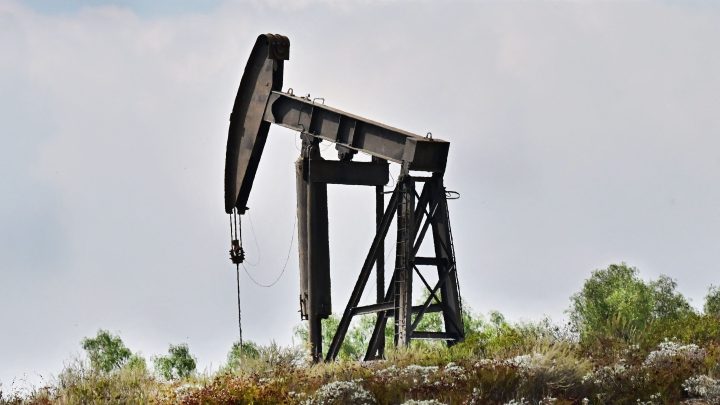
How the 1973 oil embargo changed the way the U.S. thinks about energy
How the 1973 oil embargo changed the way the U.S. thinks about energy

Fifty years ago this fall, Arab members of OPEC cut off their oil exports to the United States in retaliation for the U.S.’s support of Israel in the 1973 Mideast war.
The impact in the United States was immediate. Gasoline supplies dwindled, prices spiked and drivers lined up for blocks to fill up their tanks. As the crisis mounted, the federal government’s response changed the way we think about how we both use and acquire energy resources.
Amy Myers Jaffe remembers the gas lines.
“There was one gasoline station in the little town that I grew up in, and so lines would form for that gasoline station at 5 a.m., because gasoline would literally run out,” she said.
Jaffe, an energy expert at New York University, recalled that to Americans in 1973, the idea that there suddenly wasn’t enough gas to go around was shocking.
“The automobile was king,” she said. “People were used to not only driving everywhere — to the store, to work and so forth — but there was also this … sense of freedom and mobility.”
So on Nov. 7, 1973, then-President Richard Nixon addressed the nation. He said the country would embark on a “new course” centered on two concepts, which at that point, were brand new to most Americans. The first: energy conservation.
“In the short run, this course means that we must use less energy,” Nixon said. “That means less heat, less electricity, less gasoline.”
Nixon asked Americans to voluntarily turn down the thermostat, turn off lights, carpool and use mass transit. His administration required some changes too, said Meg Jacobs, who teaches American history at Princeton University.
“He’s the person who imposes a national speed limit, for example,” Jacobs said. ”Americans hate the speed limit. They hate it.”
Still, that loathed limit of 55 mph stayed on the books until 1995.
But another conservation measure stemming from Nixon’s response has had a longer life: fuel efficiency standards for cars. According to Brian Black, a history and environmental studies professor at Penn State Altoona, until the energy crisis, Americans didn’t think about what kind of gas mileage their cars got. They were focused on other things, like “the chrome, the type of stereo, whatever,” he said.
Then, efficiency standards gave drivers new choices.
“This is when we get into especially Japanese manufacturers coming into the marketplace and providing consumers with an option in size and efficiency at least,” Black said.
Still, the standards applied to the average fuel efficiency of each carmaker’s full fleet, which left a loophole that let them eventually market gas-guzzling SUVs in the following decades.
So, the legacy of Nixon’s call for energy conservation is mixed. But that was just one half of his plan. The other half was also brand new to most Americans: energy independence.
“In the long run, it means that we must develop new sources of energy, which will give us the capacity to meet our needs without relying on any foreign nation,” Nixon said in that November 1973 address.
Nixon hoped to make the U.S. entirely energy independent by 1980. That didn’t happen. But it did lead to more oil production in the U.S. Imports eventually peaked in 2005, and fracking and other technologies have recently made the U.S. the world’s leading oil producer.
Nixon’s push also spurred research and development into wind, solar and nuclear power and electric vehicles. For a while, the U.S. was a leader in those areas. A few years after the embargo, President Jimmy Carter even put solar panels on the White House.
“To Jimmy Carter and many other people, that was just a good idea,” said Black of Penn State. But when oil prices dropped again in the ’80s, that commitment to renewables didn’t stick.
“When Ronald Reagan became president, to him, that was a symbol of weakness,” he said.
Reagan took down the White House solar panels, and the U.S. eventually ceded its advantage in renewables. Now, with the Inflation Reduction Act, the U.S. is trying to play catch up, said Amy Myers Jaffe at NYU.
“If we’d have stayed the course since 1973 to today, and not had this volatility of commitment of policy and commitment of science dollars, we’d be in a much better place,” Jaffe said.
But some of those technologies are finally being used on a broader scale. Electric vehicles, for example. Jaffe drives one.
“When the gasoline price goes up, [it] doesn’t affect me,” she said. And those 5 a.m. gas lines can stay a childhood memory.
There’s a lot happening in the world. Through it all, Marketplace is here for you.
You rely on Marketplace to break down the world’s events and tell you how it affects you in a fact-based, approachable way. We rely on your financial support to keep making that possible.
Your donation today powers the independent journalism that you rely on. For just $5/month, you can help sustain Marketplace so we can keep reporting on the things that matter to you.

















